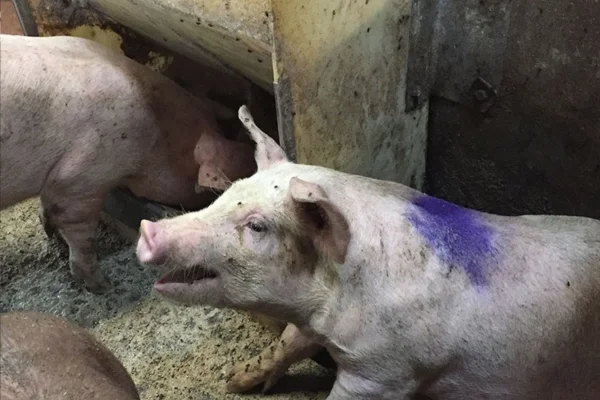The Swine Flu Epidemic
Understanding the Disease and Its Impact
Swine flu, also known as swine influenza, is a respiratory disease caused by influenza viruses that infect pigs. Although swine flu normally only infects pigs, there have been cases where the virus has gone on to infect humans, causing global health concerns. Let's take a detailed and humanized look at this disease, its impacts and prevention measures.
Understanding Disease and Its Impact on Animals
Swine flu, also known as swine influenza, is a highly contagious respiratory disease that mainly affects pigs. Caused by different strains of the influenza A virus, this disease has a major impact on animal health and pig production. In this article, we will explore the etiology, pathogenesis, spread, symptoms and prevention measures of swine flu in animals.
Etiology of Swine Flu
Swine flu is caused by various strains of the influenza A virus, the most common being H1N1, H1N2, H3N2 and H3N1. These viruses belong to the Orthomyxoviridae family and have a segmented genome made up of single-stranded RNA. Due to their ability to mutate and undergo genetic rearrangements, influenza viruses can give rise to new strains, increasing the complexity of their control.
Contents
Pigs are considered "mixed hosts" because they can be infected by influenza strains from humans, birds and other pigs. This characteristic allows the exchange of genetic material between different strains, resulting in new viral subtypes.
Pathogenesis of Swine Flu
Infection with the swine flu virus begins when the virus enters the animal's respiratory tract. The viral proteins hemagglutinin (HA) and neuraminidase (NA) play crucial roles in the infection. Hemagglutinin facilitates the binding of the virus to the epithelial cells of the respiratory tract, while neuraminidase helps release new viruses from the infected cells, allowing the infection to spread.
After the initial infection, the virus replicates rapidly in the cells of the respiratory tract, causing lesions and inflammation. This results in respiratory symptoms such as coughing, nasal discharge and difficulty breathing. The infection can also lead to secondary complications, such as bacterial pneumonia, which can be fatal if not treated properly.
Swine Flu Prevention and Control
Preventing and controlling swine flu involves a multifaceted approach, including biosecurity measures, vaccination and proper herd management.
- BiosecurityImplementing strict biosecurity practices on farms is fundamental to preventing the introduction and spread of the virus. This includes regular disinfection of facilities, controlling access to production areas, quarantining new animals and restricting the transportation of pigs between different regions.
- Vaccinations: Vaccinating pigs against swine flu is an important strategy for reducing the incidence and severity of the disease. Inactivated vaccines containing relevant strains of the virus are commonly used. Vaccination should be adapted to the specific needs of each herd, taking into account the prevalence of viral strains in the region.
- Proper ManagementProper management practices, such as separating sick animals, providing adequate nutrition and reducing stress, are essential for minimizing the spread of swine flu and improving the recovery of infected animals.
Spread of Swine Flu
Swine flu is highly contagious and can spread rapidly between pigs. Transmission occurs mainly through aerosols, respiratory droplets and direct contact with nasal secretions from infected animals. In addition, the virus can be transmitted via contaminated surfaces and fomites.
The transportation of infected pigs is one of the main ways of spreading the disease between different regions and herds. Agricultural fairs, animal markets and densely populated farms are high-risk places for spreading the virus.
Symptoms of Swine Flu in Pigs
Pigs infected with the swine flu virus usually show acute respiratory symptoms, which can include:
- High fever
- Intense coughing
- Nasal discharge
- Difficulty breathing
- Loss of appetite
- Lethargy
In some cases, the animals may show signs of conjunctivitis and eye inflammation. The infection can affect pigs of all ages, but piglets and young animals are particularly vulnerable to the most serious forms of the disease.
Swine flu diagnosis
The diagnosis of swine flu in pigs is carried out using a combination of clinical, laboratory and molecular tests. Laboratory tests, such as the Polymerase Chain Reaction (PCR), are used to detect viral RNA in samples of nasal and pulmonary secretions from the animals. Serological tests can also be used to identify the presence of antibodies against the virus.
What is Swine Flu?
Swine flu is caused by strains of the influenza A virus, the most common being H1N1, H1N2, H3N2 and H3N1. These viruses circulate mainly among pig populations, but can mutate to infect other species, including humans. The disease in pigs is highly contagious, causing symptoms such as fever, cough, lack of appetite and lethargy.
Transmission to Humans
Transmission of swine flu to humans can occur through direct contact with infected pigs, or through environments contaminated with the viruses. Person-to-person transmission is also possible, especially in places with high population density and poor ventilation.
The most notorious swine flu epidemic in humans occurred in 2009, when a new strain of H1N1, known as H1N1pdm09, emerged in Mexico and spread rapidly around the world. This pandemic resulted in significant international concern, leading to the implementation of control measures on a global scale.
Symptoms in Humans
The symptoms of swine flu in humans are similar to those of common flu, including fever, cough, sore throat, muscle aches, headaches, chills and fatigue. In some cases, there may be vomiting and diarrhea. Most cases are mild, but the disease can be severe, especially in individuals with pre-existing conditions, pregnant women, young children and the elderly.
Diagnosis and treatment
The diagnosis of swine flu in humans is usually confirmed through specific laboratory tests, such as PCR (Polymerase Chain Reaction). These tests identify the presence of viral RNA in the body.
The treatment of swine flu involves the use of antivirals, such as oseltamivir (Tamiflu) and zanamivir (Relenza), which can reduce the severity of symptoms and the duration of the illness if administered within the first 48 hours of the onset of symptoms. In addition, supportive measures such as rest, hydration and the use of medication to relieve symptoms are recommended.
Prevention and Control
Preventing swine flu involves a combination of good hygiene practices and vaccination. Washing hands regularly, avoiding close contact with sick people and wearing masks in places of risk are important measures to prevent the spread of the virus.
Vaccination is a crucial tool in the prevention of swine flu. Seasonal influenza vaccines are formulated annually to include the most common strains in circulation, including H1N1. Vaccination is especially recommended for at-risk groups, such as healthcare workers, children, the elderly and people with chronic medical conditions.
Global Impact and Lessons Learned
The H1N1 pandemic in 2009 highlighted the need for global surveillance and international cooperation in response to infectious disease outbreaks. The World Health Organization (WHO) played a central role in coordinating international efforts, issuing guidelines and providing technical support to affected countries.
The response to the pandemic included the implementation of control measures such as quarantines, travel restrictions and mass vaccination campaigns. These actions have helped to limit the spread of the virus and reduce the global impact of the disease.
Economic and Social Aspects
In addition to the impact on public health, swine flu also had significant economic and social consequences. Sectors such as tourism, transportation and food production have been severely affected. In many countries, there has been a decrease in pork production due to the preventive slaughter of infected or suspected infected animals.
The spread of misinformation and public fear have also created challenges. There have been cases of stigmatization of sick people and health professionals, as well as prejudice against certain populations and regions.
Advances in Vaccine Research and Development
Since the 2009 pandemic, there have been significant advances in the research and development of influenza vaccines. Vaccine technology has been improved to enable faster and more efficient production, using methods such as recombinant DNA technology.
In addition, there has been greater investment in epidemiological surveillance and in the ability to respond quickly to emerging outbreaks. Public health institutions around the world continue to monitor the evolution of influenza viruses in pig and human populations, in order to detect early any mutations that could pose a threat.
Future challenges
Despite advances, there are still significant challenges in the fight against swine flu and other zoonotic diseases. Globalization, climate change and antimicrobial resistance are all factors that can facilitate the emergence and spread of new pathogens.
International collaboration and transparent communication between countries are essential to tackle these threats. Public education programs are also crucial to raise awareness about prevention and control measures, reducing the risk of future outbreaks.
Final Thoughts
Swine flu is a powerful reminder of the interconnection between human, animal and environmental health. The "One Health" approach, which recognizes this interconnection, is key to preventing and controlling infectious disease outbreaks.
By learning from past pandemics and investing in research, surveillance and global collaboration, we can improve our response capacity and protect public health. Swine flu, while challenging, offers an opportunity to strengthen our health systems and our resilience in the face of future threats.
A thorough understanding of swine flu and its implications is crucial not only for health professionals, but for society as a whole. Together, we can work towards a safer and healthier future.










